Founded as a Roman military colony during the 1st century B.C., Florence achieved pre-eminence in learning, commerce, finance and the arts during the 14th to the 16th century. The present glory of Florence is mainly in its past. It was included in the UNESCO World Heritage List in 1982 with most of its buildings considered works of art and the city stamped with the personalities of the many men and women who resided there. Among the city's cultural giants are Dante Machiavelli, Leonardo da Vinci, Michaelangelo, and Galileo and the Medici family is one of Florence's most renowned rulers. The city has remained a political, cultural, and artistic force even in the modern era and is one of the places in the world which is a must-visit at least once.
So many things have been said about the Accademia and some works of art housed there. Here are a few quotations about it.
Italy is the garden of love. Tuscany is the garden of Italy. Florence is the flower of Tuscany.
I saw the angel in the marble and carved until I set him free. - Michaelangelo
Best known as the home of Michaelangelo's sculpture of David
Monument to the indomitable spirit of the Florentine republic.
The below table includes a brief description of various handpicked Accademia gallery tickets & skip the line guided tours of the Accademia. They're based on users reviews, cost, customer experience as well as all the best ways to see the famous Accademia sight.
We've compared prices from a variety of skip the line Accademia gallery guided tours & tickets, websites and have handpicked the most affordable Accademia combination tickets, but utterly enjoyable Accademia tours & tickets below:








The Accademia Gallery in Florence houses some of the most significant and most popular works of art in the world. A visit to the museum is nothing short of magical, especially if you happen to love arts and creativity. Even if you are not an art connoisseur, standing in front of these masterpieces will certainly leave you in awe and perhaps searching for a little artistic inspiration for yourself.
Some of the gallery's most famous creations are David by Michaelangelo, Prisoners by Michaelangelo, The Rape of the Sabine Women by Giambologna, Tree of Life by Pacino di Bounaguida, and Coronation of the Virgin by Jacopo di Cione.
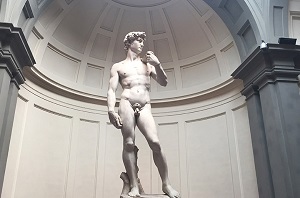
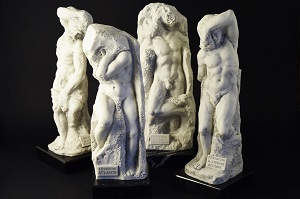


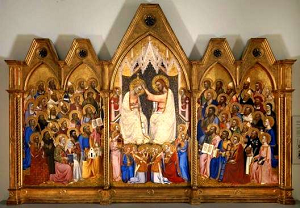
One of the top museums in Florence and in the world, Accademia Gallery welcomes millions of visitors every year. Travelers, tourists and art connoisseurs from all over the world want to see Michaelangelo's David and other masterpieces with their own eyes. All of these famous artworks are marks of mankind's artistic innovation through the centuries.
There are always long lines in front of the Accademia as visitors queue to purchase their tickets. This is why it is important to prebook tickets ahead of time. When you book ahead, you get access to the Accademia through a reserved and separate entrance for a particular date and time, saving you precious time when visiting the museum. Look at Florence day trips, as well as Florence city tour tickets and pick one that is more suitable for you.
There are always people who prefer to check things out on their own. However, art galleries are massive and can be overwhelming and unless you have a depth of knowledge of what you are looking at, you may end up wasting your time by walking around aimlessly. All you will see you will on the paintings and sculptures are their names, there are no in-depth information provided. In most cases, people have no idea what they are looking at. So, it is highly recommended to check Florence pass for your guided tour options.
Morning and noon are the most popular times to visit galleries, and museums, so when possible schedule your visit in the later afternoon. Most art galleries are open until 6:50 p, so there is more than enough time to wander around and explore.
The Accademia Gallery is just next door to Piazza San Marco. Accademia Gallery and Accademia Gallery are located very close to each other so visiting both on the same day is something that is very easy to do. Getting to the Gallery using public transport is quite easy, thanks to the Firenze Santa Maria Novella or Firenze SMNT. It is within convenient walking distance of most tourist attractions in Florence. The Accademia is just a 20-minute walk from the train station. It is not advisable for tourists to take the cab because cab drivers charge exorbitant fees for non-locals and tourists get ripped off frequently. It is also a good option to stay in one of the hotels that are in proximity of the gallery.
Tickets can be purchased at the gallery itself, through phone or online.
The Gallery has a collection of priceless masterpieces and works of art spread over different halls and different floors. If you are lover of painting and other arts, the Gallery is a must-visit at least once in your lifetime. If you are visiting the gallery soon, it is important to prepare yourself and to know what to expect when you are there so you can make the most of your time and money.
It is a must to visit the entire museum when you're there. You already paid for the entrance fee or skip-the-line pass, so use it wisely. Anyway, the gallery is not that big. Half the day is more than sufficient to see everything. David is one of the most popular work of art, but there are also other equally compelling masterpieces too.
If the history of the various works of art is something that interests you to no end, you should get a guided tour. Even if the gallery is not massive, there is so much to see and relying on the guidebook alone can get tedious and can distract you. Live guides are also more entertaining and they can give you more up-to-date information.
Expect to be awakened and enlightened to the arts when you visit the Accademia Gallery. It is nothing short of magical!
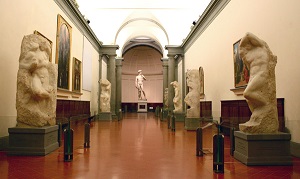
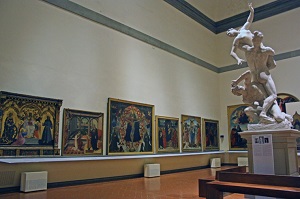
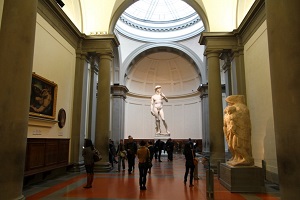
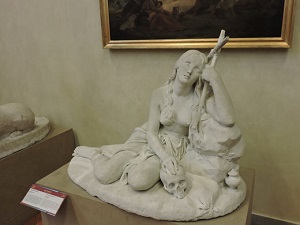
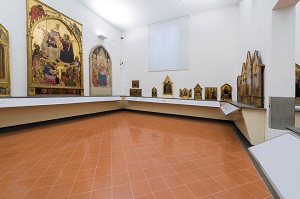
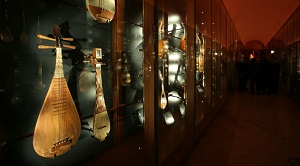
Less crowded than the ground floor and completely reorganized in 2013, the first floor houses a collection of Florentine paintings between 1370 and 1420. This is where visitors see restored masterpieces of late Gothic Florentine period. Any visit to the first floor begins with artworks explaining the Florentine religious devotion in the late fourteenth century and some of the masterpieces worth admiring are Madonna and Child by Don Silvestro of Gheraducci and Massacre of Innocents by Jacopo di Cione.
| Hall of the Prisoners | Hall of the Colossus | The Tribune | Hall Gisopteca di Bartolini | Florentine Gothic | Museum of Musical Instruments | Florence 1370-1430 |
| About | ||||||
| -Previously used in the 19th century to display ancient paintings from various collections
-Took its name from the four large sculptures showing male nudes, also known as the Slaves or Prisoners or Captives |
-Recently restyled in December 2013
-The left wing of the Hall shows the development of the Florentine school -The right wing of the Hall Perugino's grandiose panel depicting the Assumption of the Virgin |
-Originally created to conserve Michaelangelo's David which was previously standing outdoors exposed to the elements
-Designed by architect Emilio de Fabris |
-Gisopteca means hall of models
-A reproduction of Bartolini's art studio, showcasing various typologies of celebratory, private, or monumental cast models often intended for sepulchers |
-Last section of the gallery on the ground floor
-Dedicated to Florentine paintings and spread over three rooms -One room dedicated to Giottesque painters, another to 13th adn 14th century, and another to Orcagna and his brothers |
-Houses the Grand Ducal collectio of approximately 50 musical instruments
-Vast collection of string instruments, wind instruments, harpsichords -Visitors get lessons in musical history and the roots of the invention of the piano |
-Reorganized in 2013 to house a collection of late 14th century Florentine paintings rangng between 1370 and 1420
-A very peaceful environment suitable for admiring carefully restored pieces of work during the late Gothic Florentine period |
| Best Views | ||||||
| -Fra Bartolomeo's The Prophet Isaiah and The Prophet Job
-Andrea del Sarto's Christ as the Man of Sorrows -Michele di Rodolfo del Ghirlanaio's Ideal Head |
-The plaster model of the stunning sculpture 'Rape of the Sabines' by Giambologna.
-Wedding chest 'Cassone Admiari' belonging to the Adimari family |
-Michaelaneglo's David is the centerpiece of the Tribune
-On the right wing is Franceso Salvati's Madonna and child with the young St.John and an angel -On the left wing are works of art by various artists |
-Selection of the finest 29th century plaster casts by Lorenso Bartolini, one of the most briliiant professos and one of the greatest sculptors of the Accademia | -The first room showcases some of the oldest artworks in the Accademia
-The Giottesque Room houses works by 14th century followers of Giotto -The Orcagna Room displays some of the artworks by the four artist brothers |
-One of the most precious works in the exhibit is the one-of-a-kind tenor viola made by Antonio Stradivari in 1690
-The tenor viola was part of the instruments used by the 'Medici Quintet' |
-The Vestibule houses artworks that explain the Florentine religious devotion in the late fourteenth century
-The central lounge allows visitors to appreciate the commissions of the Florentine Guilds -The last wing of the museum houses the Gall of the International Gothic which houses a collection of important works by Lorenzo Monaco |
| Things to do | ||||||
| -Immerse yourself in the works or art and sculptures of Michaelangelo, Daniele da Volterra, and many others | -Admire works of art by Giambologna, Rafaellino del Garbo, Filippino Lippi, and Domenico Ghirlandiao | -Admire works of art by Bronzino, Allori, Cecchino Salvati, Michaelangelo and many others | -Be in awe of the plaster models of sculptures by Bartolini and Pampaloni and the collection of sculptures and paintings which were awarded by the Academy of Fine Arts of Florence | -Some of the most popuar works of art are the monumnetal depiction of Trinity, Jacopo di Cione's Coronation of the Virgin, and the large painted Crucifix by Bernardo Daddi, one of Giotto's pupils | -Multimedia systems give visitors information about the sounds and features of instruments, as well as explain the grandiose festivals arranged by the town by the Medici in theaters and villas | -Some of the most important artworks in the Florentine Gothic Hall are Madonna and Child with Saints by Gherardo Starnina and Coronation of the Virgin by Rossello di Jacopo Franchi |